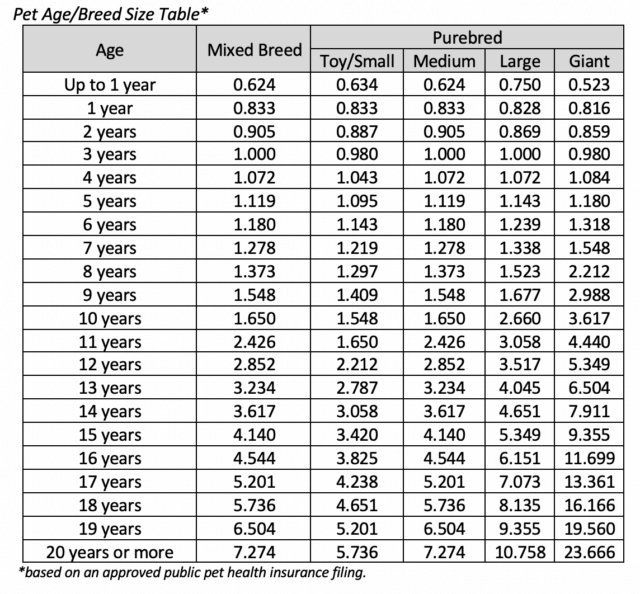Every company writing commercial insurance products needs flexibility in its filed rates in order to charge the appropriate premium. There are many different types of rating flexibilities in the commercial lines insurance marketplace for admitted state filings, but the terminology is somewhat confusing and is often misunderstood. In this summary, we describe each main type of rating flexibility and provide a clearer definition based on our experience with the various Departments of Insurance (“DOI”s) and lines of business.
With some exceptions, commercial lines rates and rules are subject to the DOI’s state filings and approval requirements, similar to personal lines. Commercial lines premiums must also be calculated in compliance with filed rates and rules.
However, commercial lines policy premiums are generally bigger, coverages are more complex, and limits are higher compared to personal lines. As a result, the level of underwriting required for commercial lines is more than personal lines. In addition, risks insured under commercial lines are more heterogeneous, so is difficult for a rating manual to address the rating characteristics of all possible risks. This heterogeneous nature often leads to the need for customized coverage. Also, larger and more sophisticated commercial risks may utilize risk managers to evaluate and mitigate their exposure to loss. To address all of that, commercial lines products require more flexibility in their rating manuals than personal lines.
Incorporating rating flexibilities into a filed commercial lines rate and rule manual can help an insurance company be more competitive, have more accurate premiums and reduce the need for rate filing revisions year over year—saving time and money.
For states that are fully exempt from filing requirements (meaning rates/rules are not required to be filed), companies have more rate flexibility than in states that require filings. Additionally, large risk filing exemptions (which vary by state and are related to number of employees, premium size, etc.) provide companies with greater rate flexibility in determining the appropriate rate for the risk. Below we have addressed the various ways companies add rate flexibility to programs that are filed with the state DOIs.
Schedule Rating Plans
This classic underwriting tool is a table of debits or credits that are applied to the manual rate to reflect the characteristics of an individual insured that are expected to have a material impact on expected loss.
It allows the underwriter to adjust an insured’s premium up or down to recognize that they may be better or worse than the average risk while remaining compliant with the filed rates and rules. Schedule rating is meant to address characteristics of the risk which are generally not otherwise reflected in the rating manual.
Most DOIs allow Schedule Rating plans, but the requirements regarding maximum overall debits and credits, maximums by risk characteristic and minimum premium eligibility vary by state. It is important to be familiar with each state’s requirements to achieve maximum flexibility while remaining compliant.
Ranges of rates
Many states permit ranges of rates within the base rates and rating factors to allow for additional flexibility in a rating plan. Although allowing this flexibility, some states will require underwriting guidance in the rating manual giving some details on how the factors within the range are selected. Note that ranges of rates are allowed in addition to Schedule Rating plans. In combination, they can provide a significant amount of flexibility.
Refer to Company Rating / (a) rates
Refer to company and (a) rating mean the same thing: they tell a DOI in an admitted filing that a particular risk is difficult to price and the premium calculations will be performed internally (generally by an experienced underwriter) and the actual rate will not be filed.
This is also very similar to (and sometimes used interchangeably with) “Individual risk rating”. While most state DOIs allow individual risk rating, the requirements for state filings vary. First, states have different requirements regarding filing the individual risk rating rule—some don’t require a rule be filed at all, others require a simple rule notifying the DOI of an insurer’s intention to individually rate risks, while some require that the manual include specific formulas and/or procedures that will be used to determine the individual risk premium.
States also differ on the documentation or requirements for state filings when an individual risk rating rule is utilized for individual risk. Some require only that the premium calculation be documented in the underwriting file, while others require that the individual premiums be filed with the DOI. There are also some additional reporting requirements in some states. It is important to be familiar with these requirements to ensure your underwriters use this flexible rating tool compliantly.
Guide (a) rates
This term is used less often in the industry and is usually described as a rating plan that has very large ranges of rates and is proposed as a rough “guide” for rating. The final charged rate is not permitted to go outside the bounds of the large ranges included in the rating plan.
Generally, the ranges are so large, it is very similar to (a) rating (described above) but gives a significant amount of additional flexibility when a DOI does not allow a certain section or manual to be completely (a) rated and is looking for some premium boundaries.
Tiering
Another method for adding rating reflexibility is tiering, which typically includes three to five tiers with factors below and above one. Criteria such as experience, financial stability and loss prevention are typically used for each tier to differentiate risk.
Where permitted, tiering can be introduced within a single company (intra-company tiering) and/or across multiple companies in a group (inter-company tiering). Intra-company tiering guidelines are required to be filed in most states, but are rarely required to be filed for inter-company tiering. The criteria used in tiering should generally not overlap with the criteria used in the Schedule Rating Plans or rating plans with ranges of rates to prevent double counting.
Consent to Rate
Once an insurance carrier has an approved filing, many DOIs allow consent to rate filings. These generally require a short form signed by the insured showing the premium they will be charged, which will be some amount above (or below, in a handful of states) the premium calculated from the filed and approved rate. In some states, support is also required for the deviation. Filing approval is generally very quick, which may make this the optimal way to achieve a more appropriate rate for the risk.












